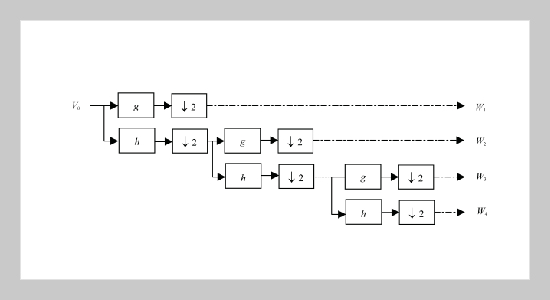REFERENCES
- [1] Atal, B., “Effectiveness of Linear Prediction Characteristics of the Speech Wave for Automatic Speaker Identification and Verification,” Journal of Acoustical Society America, Vol. 55, pp. 1304�1312 (1974).
- [2] White, G. M. and Neely, R. B., “Speech Recognition Experiments with Linear Prediction, Bandpass Filtering, and Dynamic Programming,” IEEE Trans. on Acoustics, Speech, Signal Processing, Vol. 24, pp. 183� 188 (1976).
- [3] Vergin, R., O’Shaughnessy, D. and Farhat, A., “Generalized Mel Frequency Cepstral Coefficients for LargeVocabulary Speaker-Independent Continuous-Speech Recognition,” IEEE Trans. on Speech and Audio Processing, Vol. 7, pp. 525�532 (1999).
- [4] Furui, S., “Cepstral Analysis Technique for Automatic Speaker Verification,” IEEE Trans. on Acoustics, Speech, Signal Processing, Vol. 29, pp. 254�272 (1981).
- [5] Tishby, N. Z., “On the Application of Mixture AR Hidden Markov Models to Text Independent Speaker Recognition,” IEEE Trans. on Signal Processing, Vol. 39, pp. 563�570 (1991).
- [6] Yu, K., Mason, J. and Oglesby, J., “Speaker Recognition Using Hidden Markov Models, Dynamic Time Warping and Vector Quantisation,” IEE Proceedings – Vision, Image and Signal Processing, Vol. 142, pp. 313�318 (1995).
- [7] Reynolds, D. A. and Rose, R. C., “Robust TextIndependent Speaker Identification Using Gaussian Mixture Speaker Models,” IEEE Trans. on Speech and Audio Processing, Vol. 3, pp. 72�83 (1995).
- [8] Miyajima, C., Hattori, Y., Tokuda, K., Masuko, T., Kobayashi, T. and Kitamura, T., “Text-Independent Speaker Identification Using Gaussian Mixture Models Based on Multi-space Probability Distribution,” IEICE Trans. on Information and Systems, Vol. E84- D, pp. 847�855 (2001).
- [9] Alamo, C. M., Gil, F. J. C., Munilla, C. T. and Gomez, L. H., “Discriminative Training of GMM for Speaker Identification,” Proc. of IEEE Int. Conf. on Acoustics, Speech, and Signal Processing (ICASSP 1996), Vol. 1, pp. 89�92 (1996).
- [10] Pellom, B. L. and Hansen, J. H. L., “An Efficient Scoring Algorithm for Gaussian Mixture Model Based Speaker Identification,” IEEE Signal Processing Letters, Vol. 5, pp. 281�284 (1998).
- [11] Soong, F. K., Rosenberg, A. E., Rabiner, L. R. and Juang, B. H., “A Vector Quantization Approach to Speaker Recognition,” Proc. of IEEE Int. Conf. on Acoustics, Speech, and Signal Processing (ICASSP 1985), Vol. 10, pp. 387�390 (1985).
- [12] Burton, D. K., “Text-Dependent Speaker Verification Using Vector Quantization Source Coding,” IEEE Trans. on Acoustics, Speech, Signal Processing, Vol. 35, pp. 133�143 (1987).
- [13] Zhou, G., Mikhael, W. B., “Speaker Identification Based on Adaptive Discriminative Vector Quantisation,” IEE Proceedings – Vision, Image and Signal Processing, Vol. 153, pp. 754�760 (2006).
- [14] Juang, B. H. and Gray, A. H., “Multiple Stage Vector Quantization for Speech Coding,” Proc. of IEEE Int. Conf. on Acoustics, Speech, and Signal Processing (ICASSP 1982), Vol. 7, pp. 597�600 (1982).
- [15] Hermansky, H., Tibrewala, S. and Pavel, M., “Toward ASR on Partially Corrupted Speech,” Proc. of Int. Conf. on Spoken Language Processing, pp. 462�465 (1996).
- [16] Hsieh, C. T. and Wang, Y. C., “A robust Speaker Identification System Based on Wavelet Transform,” IEICE Trans. on Information and Systems, Vol. E84-D, pp. 839�846 (2001).
- [17] Hsieh, C. T., Lai, E. and Wang, Y. C., “Robust Speaker Identification System Based on Wavelet Transform and Gaussian Mixture Model,” Journal of Information Science and Engineering, Vol. 19, pp. 267�282 (2003).
- [18] Hsieh, C. T., Lai, E. and Chen, W. C., “Robust Speaker Identification System Based on Multilayer EigenCodebook Vector Quantization,” IEICE Trans. on Information and Systems, Vol. E87-D, pp. 1185�1193 (2004).
- [19] Chen, W. C., Hsieh, C. T. and Lai, E., “Multi-Band Approach to Robust Text-Independent Speaker Identification,” Journal of Computational Linguistics and Chinese Language Processing, Vol. 9, pp. 63�76 (2004).
- [20] Allen, J. B., “How do Humans Process and Recognize Speech?,” IEEE Trans. on Speech and Audio Processing, Vol. 2, pp. 567�577 (1994).
- [21] Bourlard, H. and Dupont, S., “A New ASR Approach Based on Independent Processing and Recombination of Partial Frequency Bands,” Proc. of Int. Conf. on Spoken Language Processing, Vol. 1, pp. 426�429 (1996).
- [22] Tibrewala, S. and Hermansky, H., “Sub-Band Based Recognition of Noisy Speech,” Proc. of IEEE Int. Conf. on Acoustics, Speech, and Signal Processing (ICASSP 1997), Vol. 2, pp. 1255�11258 (1997).
- [23] Mirghafori, N. and Morgan, N., “Combining Connectionist Multiband and Full-Band Probability Streams for Speech Recognition of Natural Numbers,” Proc. of Int. Conf. on Spoken Language Processing, Vol. 3, pp. 743�747 (1998).
- [24] Linde, Y., Buzo, A. and Gray, R. M., “An Algorithm for Vector Quantizer Design,” IEEE Trans. on Communications, Vol. 28, pp. 84�95 (1980).
- [25] Godfrey, J., Graff, D. and Martin, A., “Public Databases for Speaker Recognition and Verification,” Proc. of ESCA Workshop Automat. Speaker Recognition, Identification, Verification, pp. 39�42 (1994).
- [26] Wu, X., Luo, D., Chi, H., and H., S., “Biomimetics Speaker Identification Systems for Network Security Gatekeepers,” Proc. of Int. Joint Conf. on Neural Networks, Vol. 4, pp. 3189�3194 (2003).
















